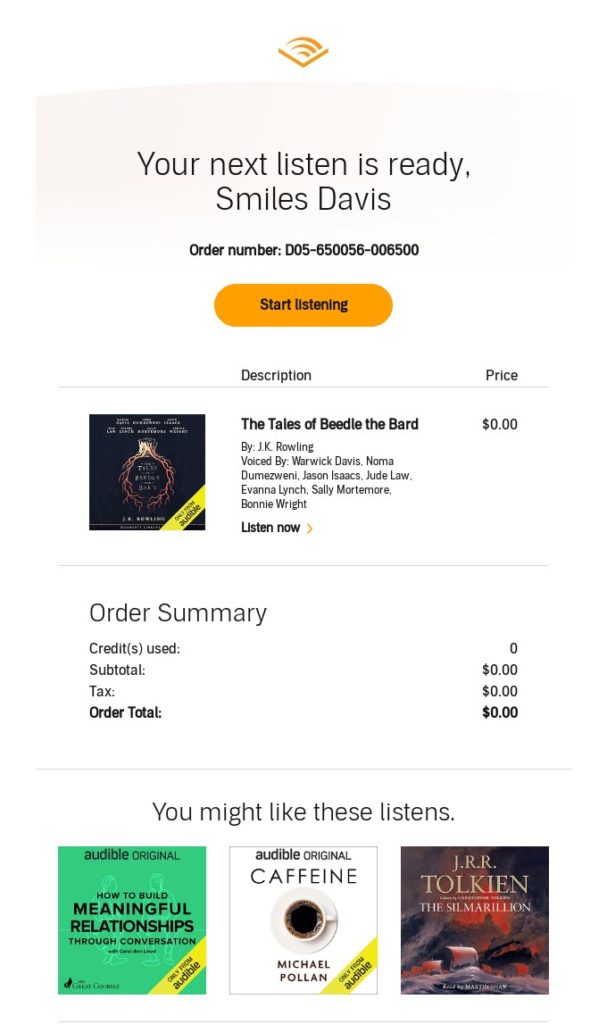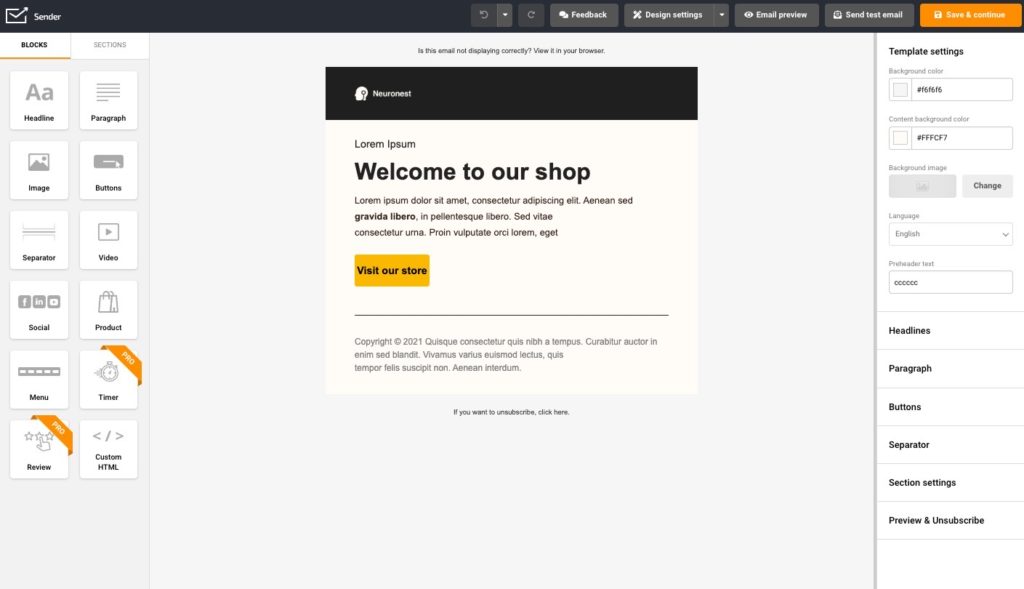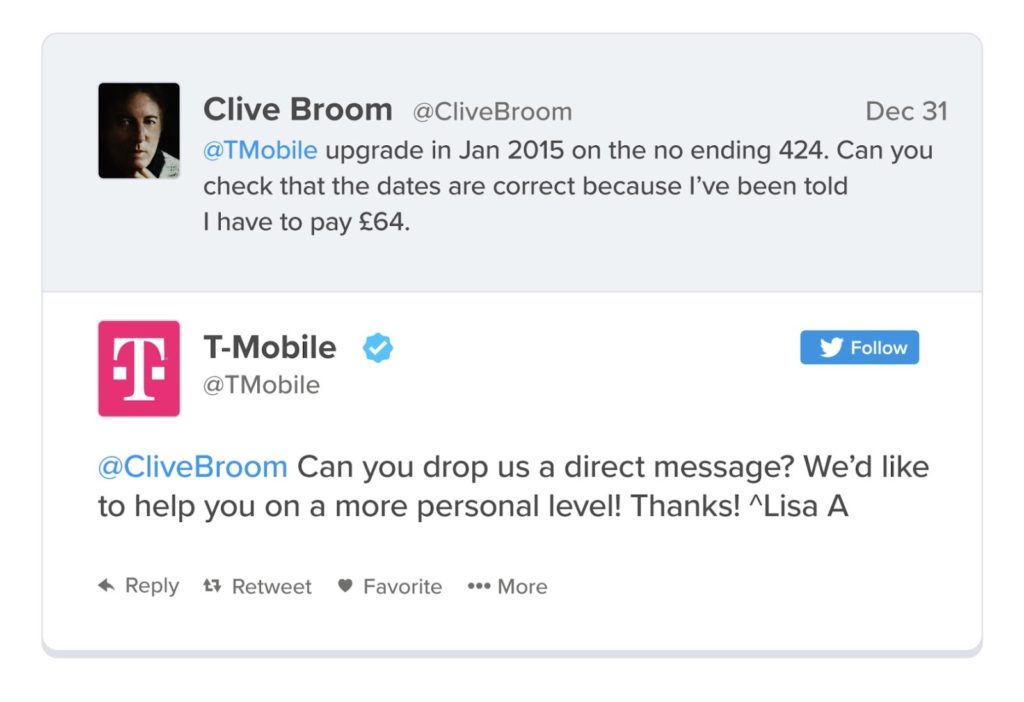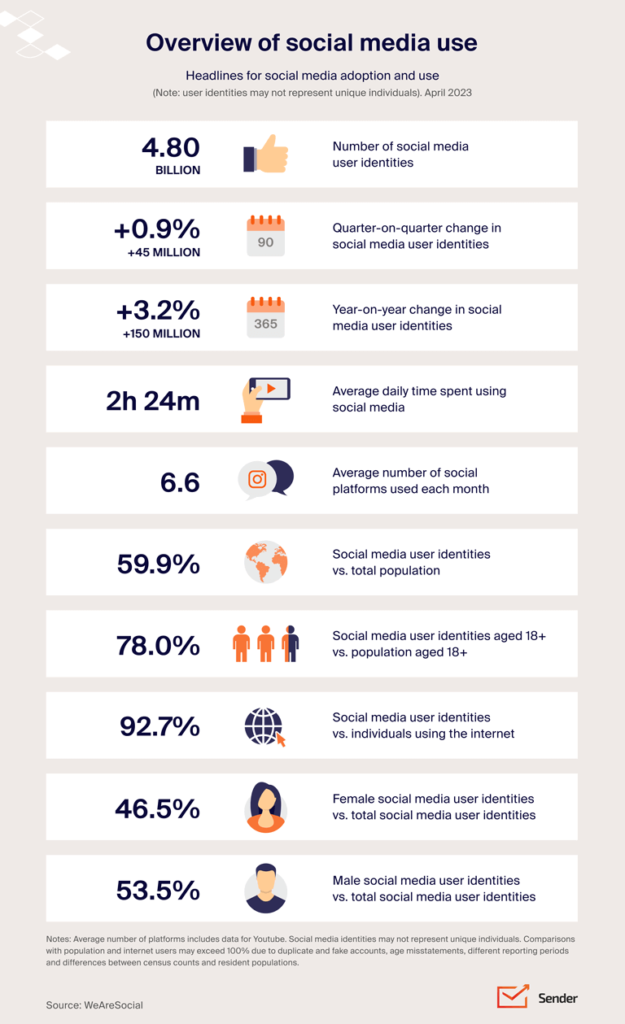Have you ever struggled to attract customers to your eCommerce store or how to make them stay over the long term?
If so, you’re not alone. Many online businesses struggle to build a strong brand and establish lasting customer relationships. This scenario can lead to lost revenue and lower customer lifetime value.
Fortunately, there are solutions to these challenges. In this article, we’ll explore the pain points of eCommerce branding and provide solutions to help you create a powerful branding strategy that can attract and retain customers, boost revenue, and build long-term loyalty.
What is Ecommerce Branding?
Have you ever come across a business that just sticks in your mind? Maybe it’s their catchy logo, engaging social media presence, or even their unforgettable tagline. That’s the power of ecommerce branding. It’s about creating a brand identity that customers can easily identify, engage with, and remember.
Now, we’re not just spewing marketing jargon here. The facts and figures back it up.
One alarming trend is the rising cost of gaining new customers. Thanks to the rapid influx of direct-to-consumer brands into the market, the competition is getting cutthroat. Small e-commerce businesses with fewer than four employees shell out an average of $58.64 just to acquire a new customer. That’s not pocket change! With more businesses dying for attention, advertising costs have skyrocketed, making it even harder to stand out from the crowd.
A study by Motista uncovered a mind-blowing fact: when customers have an emotional connection to a brand, their lifetime value shoots up by a staggering 306% compared to those who don’t feel that connection.
Can you believe it? It’s like their loyalty is in turbo mode! And not only that: these emotionally connected customers are not only devoted, but they also open up their wallets and spend at least twice as much with their favorite retailers.
Shoppers have a natural inclination to gravitate toward brands they know and trust. This preference highlights the importance of investing in brand familiarity and recognition.
And the secret? Consistent branding that weaves recognizable logos, captivating color schemes, and compelling messaging across every interaction. It’s like creating a magnetic force that pulls customers in, forging a cohesive brand experience they won’t forget.
Here are some more statistics that prove ecommerce branding is crucial:
- 59% of consumers choose beauty over simplicity when it comes to websites.
- 82% of shoppers stay loyal to brands that align with their values.
- Customers who engage through multiple channels are like spending machines, spending 4 times over those who stick to in-store shopping only.
So, here’s the bottom line: consistency is the name of the game for ecommerce branding. Across websites, social media, packaging, and customer communications, keeping that brand image strong and recognizable is the secret to driving customer loyalty.
Perks of Ecommerce Branding
Let us spill the tea on why a killer eCommerce branding strategy is a game-changer for online businesses. Buckle up because we’ve got three major benefits coming your way.
Consistent Increase in Revenue
When your brand truly speaks to your target audience, magic happens. Trust and loyalty become your best friends, and guess what? Customers start flocking to your brand like bees to honey. They choose YOU over those pesky competitors, leading to conversion rates that are through the roof. It’s like hitting the jackpot of customer preference.
Better Relationship with Customers
Something incredible happens when your branding hits all the right notes and strikes a chord with your customers: an emotional connection is formed. It’s like a spark that ignites a fire of loyalty and love.
And you know what’s even better? These emotionally connected customers become your brand’s biggest cheerleaders. They can’t help but advocate for your brand, spreading the word far and wide.
Lower Customer Acquisition Costs (CAC)
Customer Acquisition Cost Formula:
CAC = TE / NC
CAC – Customer acquisition cost
TE – Total expense to attract, engage, and convert a new customer
NC – Number of new customers acquired
A strong brand presence has the power to slash your customer acquisition costs. Here’s the deal: CAC measures the moolah an organization invests in snagging new customers.
But guess what? You can take control and reduce those costs. How, you ask? By focusing on the golden ticket of repeat purchases. Yes, that’s the name of the game. Keep track of how often customers come back for more and the average amount they spend per order.
That loyal customer base you’ll be building? It’s like a goldmine for your brand.
Say goodbye to costly advertising and marketing campaigns because word-of-mouth marketing, loyalty programs, and customer referrals will do the heavy lifting for you. It’s like a cost-cutting extravaganza that boosts your brand’s bottom line.
Also read: What is Brand Loyalty? (Definition, Types, Examples)
8 Essential Ecommerce Branding Strategies
Let’s break it down into eight essential strategies that will set you up for eCommerce branding success. These strategies are the secret recipe for building a strong brand identity, connecting with your target audience, and driving growth in the competitive online marketplace.
1. Define Your Target Audience

It all starts with one crucial step: defining your target audience. The more you know about them, the better you can tailor your branding efforts to their needs and preferences.
Now, demographics are your best friends. Understanding your audience’s demographics provides valuable insights into their purchasing behavior. It’s like having a crystal ball that reveals the most effective channels to reach and engage with them. You’ll know exactly where to go and how to capture their attention.
But we can’t stop there. To truly connect with your audience, you must understand their pain points and motivations. What keeps them up at night? What drives them to make that purchase? Dive deep into their world and uncover their challenges and aspirations.
With this knowledge, you can craft a value proposition that speaks directly to their needs and desires. Addressing their pain points and motivations with a compelling value proposition will make your brand irresistible and highly relevant to them.
2. Highlight Selling Points

In the vast world of online shopping, standing out from the competition is a must-do for businesses. That’s where your unique selling propositions (USPs) come into play. These powerful tools need to spotlight the features, benefits, and value of your products or services. Show your customers how you can solve their problems or fulfill their needs, and you’ll be golden.
Now, let’s talk about creating a clear value proposition. This little gem of a statement expresses what your brand offers, who it serves, and what makes it one-of-a-kind. It’s like a magnetic force that differentiates your brand, generates interest, and attracts new customers.
To craft a compelling value proposition, you’ve got to get inside the minds of your target audience. Understand their pain points, their desires, and what they value the most. Armed with this knowledge, you can create a message that hits home and resonates with their needs and aspirations.
But there’s more! Social proof is a powerful weapon in the world of eCommerce. Just think about it — 95% of customers read online reviews before purchasing. That’s huge! So, motivate your customers to share their reviews and testimonials. Harness the power of social proof and use it in your marketing and branding efforts.
The Anatomy of a USP (Unique Selling Proposition):
1. Short & Sweet. Conveys what you mean in as few words as possible
2. Memorable. People can easily recognize it and repeat it the next day and the day after that…
3. Emotional. Makes an emotional connection with your market
4. Relevant. Speaks directly to your target market’s needs
5. Clear. Tell people exactly who you are and why you are different.
3. Focus on Email Marketing
Here’s another powerful eCommerce branding strategy that can take your business to the next level: email marketing. It’s like having a direct line of communication to nurture customer relationships and keep that connection alive.
A successful email campaign starts with personalization and targeting. You can send tailored emails that hit the bullseye by leveraging customer data and segmentation.
Platforms like Sender make it a breeze to segment your audience based on purchase history, browsing behavior, and demographics. This means you can send personalized welcome emails to new subscribers, recommend products that align with their interests, and offer exclusive promotions tailored to their preferences.

Save your time and energy — effortlessly create high-converting automated workflows with Sender.
And here’s the secret: delivering content that truly resonates with each customer’s needs and preferences. It’s like hitting the sweet spot that keeps them engaged and ready to convert. Say goodbye to generic emails and hello to that personalized touch that makes all the difference.
Now, let’s not forget the power of welcome emails. They’re like the VIP pass to eCommerce branding. Use this golden opportunity to introduce your brand, highlight your unique value proposition, and set the tone for future interactions.
Craft well-designed welcome emails with platforms like Sender that leave a lasting impression on new subscribers. It’s all about creating a positive brand experience from the very beginning.
And hey, why not sweeten the deal? Use welcome emails to deliver exclusive offers, discounts, or incentives that motivate customers to make their first purchase. It’s like rolling out the red carpet for them.
4. Transparent Policies
Here’s another crucial element of eCommerce branding—transparency. It’s like a breath of fresh air that builds trust and enhances the overall customer experience.
When it comes to shipping, be crystal clear. Communicate the expected delivery times, shipping costs, and any other relevant information. Customers appreciate knowing what they’re getting into and having full transparency about the shipping process. Being upfront about potential delays or limitations helps manage their expectations and minimizes frustration.
Now, let’s dive into return policies. Transparency is the name of the game here too. Clearly state your return window, any conditions or requirements, and the process for initiating returns. It’s like giving your customers peace of mind, knowing that if things don’t work out, there’s a straightforward and transparent process. Trust is the foundation for long-lasting customer relationships.
Last but not least, customer support policies. Transparency should shine through here as well. Make it clear how customers can reach your support team—whether through email, live chat, or phone. No hidden corners, no secret paths. It’s all about being readily available and transparent, ready to assist and provide exceptional customer support.
5. Prioritize Customer Service
The next strategy is a game-changing aspect of eCommerce branding: customer service. It’s the secret ingredient that can take your brand to new heights. Get ready to uncover the secrets of exceptional service!
First of all, prioritize delivering exceptional service at every customer interaction. It’s like making a promise to yourself that you’ll go above and beyond. When customers reach out with questions or concerns, make it a top priority to respond promptly. Show them that their time is valuable to you and that you’re committed to providing a positive experience. It’s all about being there for them when they need you.
Then there’s accessibility. Ensure your customer service channels, whether phone support, email, or live chat, are easily accessible and responsive. It’s like opening the door wide and inviting your customers in with open arms. Be there when they need you, ready to assist and provide a seamless experience.
You should also do active listening. Show your customers that you truly hear them and that their concerns matter. Demonstrate empathy and take swift action to find a solution. Customers appreciate proactive problem-solving and feel valued when issues are resolved quickly and effectively.
Finally, always go above and beyond. Surpass basic assumptions and strive to exceed customer expectations. Surprise them with personalized gestures like handwritten thank-you notes, personalized emails, or unexpected freebies. It’s like sprinkling a little enchantment on their customer journey. Show genuine appreciation for their support and loyalty, and watch as strong customer relationships blossom.
Here’s a great example of customer service:

6. Develop a Content Strategy
You should also leverage the power of a robust content strategy. It’s like having a magic wand that allows you to engage with your target audience on a whole new level.
First things first, create valuable, relevant, and evergreen content. Make sure it hits the mark, whether it’s blog posts, videos, social media content, or product guides. Tailor this content to meet your audience’s needs and interests.
Now, let’s talk about the power of educational content. This is where the real action unfolds. Address your audience’s pain points or challenges and offer valuable insights and solutions. By positioning your brand as an authority in your industry, you build trust with your audience and establish yourself as the go-to resource for information and guidance.
Let’s take an example to bring it to life. If you’re marketing online web development degree programs, you can create blog posts or videos covering career opportunities, tips for learning coding languages, or advice for building a portfolio.
By providing educational content that addresses the needs of aspiring web developers, you position your brand as a trusted resource and attract potential students to your programs.
7. Craft a Compelling Headline

In addition, don’t forget to craft a compelling headline. It’s like capturing lightning in a bottle that leaves a lasting imprint on your customers’ minds.
First, your brand’s headline or tagline should capture the essence of your brand powerfully. It needs to be memorable and strike a chord with your target audience. Think of it as the key that unlocks their hearts and minds.
When crafting a headline, consider the key attributes that define your brand. Reflect on your unique value proposition, the emotions you want to evoke, and the core message you want to convey. A compelling headline should encapsulate these elements in a concise and impactful manner.
The ultimate goal is to create a headline that grabs attention and aligns with your target audience’s values and aspirations. It should resonate with their needs, desires, and pain points. When they read it, they should feel like you’re speaking directly to them, addressing their deepest desires.
Now, here’s the final ingredient: make it memorable. Your headline should be easy to recall and instantly associated with your brand. Consider using catchy phrases, clever wordplay, or vivid imagery to make it stick in the minds of your customers. It’s like creating a mental hook that keeps your brand at the forefront of their thoughts.
A memorable headline is like a shining beacon in a crowded marketplace. It helps your brand stand out and triggers customers to recall your brand when making purchasing decisions.
8. Leverage Social Media

Last but not least, let’s talk about the power of social media in eCommerce branding. It’s like having a secret weapon that brings brand awareness and audience engagement and showcases your amazing products or services.
But here’s the catch: to make the most of social media, you need a solid strategy that aligns with your brand identity and sparks meaningful interaction.
So, start by identifying the platforms where your target audience hangs out: Facebook, Instagram, Twitter, or LinkedIn. Then, reach that right audience and watch your brand soar!

Always remember consistency is key. Ensure your brand is present across all social media channels, using visual elements like logos and colors to create a cohesive brand experience. It’s like giving your audience a visual feast they can’t resist.
Now, let’s talk about content. Create compelling posts that speak directly to your audience’s hearts. Whether it’s informative articles, entertaining videos, product highlights, customer testimonials, or behind-the-scenes glimpses, make sure your content resonates and leaves a lasting impression.
But it doesn’t end there. Engagement is the name of the game. Actively respond to comments, messages, and mentions from your followers. Show them that you appreciate their input and value their presence. It’s all about fostering a sense of community and building trust. And hey, don’t forget to leverage social media marketing automation tools to keep that follower engagement on point.
Here’s a secret weapon: social media campaigns and promotions. Consider running contests or offering exclusive discounts to amplify your brand’s reach and get your audience buzzing. It’s like lighting a fire that spreads the word about your brand within their networks. These initiatives boost engagement and incentivize your audience to become brand ambassadors.
Key takeaways
Ecommerce branding is the secret sauce for taking your online business to new heights. Stand out, leave a lasting impression, and enjoy the benefits of increased revenue, stronger customer relationships, and reduced customer acquisition costs. Remember the golden rule: be unique, memorable, and ready to conquer the online world. Let your brand shine!
Remember these major takeaways when implementing your eCommerce branding strategy:
- eCommerce branding is crucial for building a successful online business.
- Effective branding leads to increased recognition, trust, and loyalty.
- Consistent branding across all touchpoints, including logos, color schemes, and messaging, enhances brand awareness and recognition.
- User-friendly website design and seamless customer experience are essential for establishing credibility and attracting customers.
- Authenticity and transparency in communications and aligning with customers’ values foster loyalty and trust.
- Utilizing omnichannel marketing results in higher purchase frequency and average order value.
- Implementing a robust eCommerce branding strategy offers increased revenue, better customer relationships, and lower customer acquisition costs.
- Essential strategies for eCommerce branding include defining the target audience, highlighting unique selling points, leveraging email marketing, prioritizing customer service, developing a content strategy, crafting compelling headlines, and leveraging social media
Also read:
